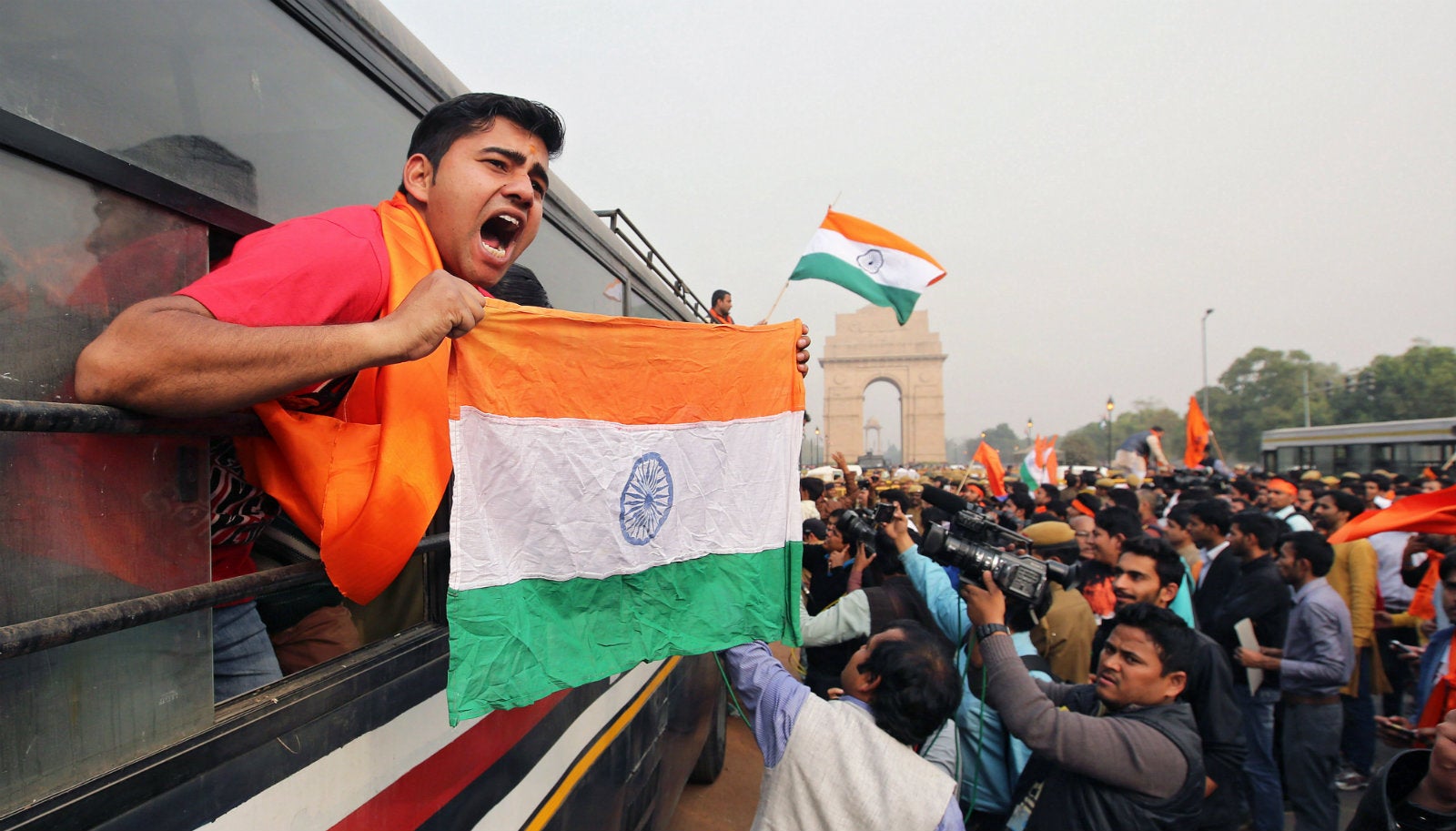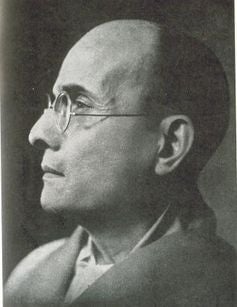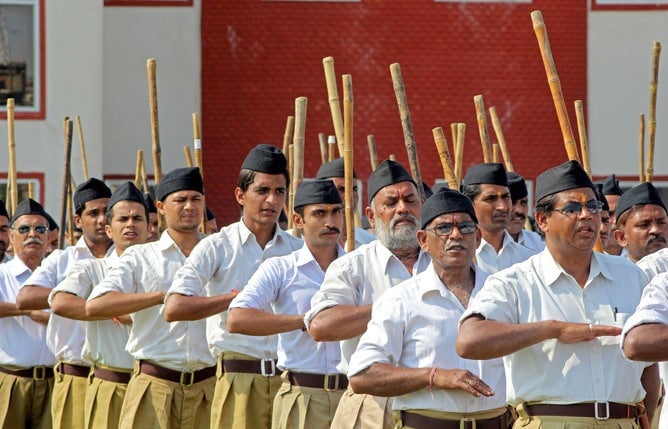A short history of the rise and rise of Hindu nationalism in India
In early February, a video claiming to show an “anti-India” rally being held at the prestigious Jawaharlal Nehru University in New Delhi went viral. Police entered the campus, arresting the president of the student union, Kanhaiya Kumar, on colonial-era sedition charges.


In early February, a video claiming to show an “anti-India” rally being held at the prestigious Jawaharlal Nehru University in New Delhi went viral. Police entered the campus, arresting the president of the student union, Kanhaiya Kumar, on colonial-era sedition charges.
Amit Shah, the president of India’s ruling Bharatiya Janata Party (BJP), accused the university of becoming “a centre which encourages terrorism and separatism.” Critics of the government argue that the university has been targeted for its well-established traditions of political activism in opposition to the BJP, a party rooted in Hindu nationalism.
At the heart of this lies the concept of Hinduvta or “Hinduness”, an ideology rooted in a belief that Hindus are united around a common culture which forms the basis for the Indian nation.
The idea is relatively modern, and can be traced to the region’s encounter with colonial rule. In the Western imagination, the region was pictured as essentially religious and stagnant. The British colonial state controversially ruled India in a way that hardened religious boundaries, and encouraged its subjects to see themselves and others in this light.
This contributed to the activism of Hindu groups such as the Arya Samaj and the Sanatana Dharma Sabhas, whose members turned to debating how Hindu society could be best reorganised and revived.
One of the key issues they debated related to Hindu unity—particularly as the Western conception of Hinduism, imposed on many Indians by British colonial rule, was actually alien to many of those who now fell under its classification. The existence of diverse caste histories and traditions also seemed to fracture any idea of a single Hindu community.
During the early decades of the 20th century, activists associated with Arya Samaj, such as Shraddhanand, argued for a reorganised, “meritocratic” caste system as a way to reunite Hindus. But historians such as John Zavos have shown how this approach to reorganise the caste system was rejected as divisive during the 1920s.
Hindu unity was subsequently built instead on a more conservative, symbolic level, by activists, which explicitly drew boundaries between Hindus on the one hand, and Muslims and Christians on the other.
In this way, the fact that upper-caste Hindus within this “newly unified” Hindu community were in the numerical minority was not widely challenged—nor was the power and privilege they were amassing.
Hindu unity
It was Veer Savarkar, a former anti-colonial revolutionary, who translated this idea of Hindu unity into a more potent symbol: that of the Indian nation-state. First published in 1923, his text Hindutva: Who is a Hindu, saw religious boundaries as national ones, with Islamic and Christian traditions considered as an illegitimate, foreign presence.

Yet, that left the question of how to construct a Hindu nation. In 1925, an upper-caste Brahmin, Keshav Hedgewar, founded what would become India’s preeminent Hindu nationalist association: the Rashtriya Swayamsevak Sangh (RSS).
Influenced by both Savarkar and a “muscular, colonial Christian” view that Hindu men were effeminate, RSS activists reworked Hindu traditions and added two foundational tenets of Hindu nationalism: Sangathan (Hindu organisation), and Seva (service).
Local RSS units—there are well over 50,000 today—were tasked with responding to the so-called emasculation of Hindus by building “manly Hindu men” of “character and values”. Acquiring discipline was seen as important here, to be achieved through public, uniformed drills and martial games.
Hindu organisation was also seen as a way to revitalise the wayward morals of some Hindus. Today, uniformed RSS activists serve and unify the Hindu nation by ordering Hindu festivals and teaching their own Hindu practices to lower-castes, such as abstaining from eating beef.

The birth of the BJP
The British decision in 1947 to partition India devastated lives. Estimates vary, but around two million people were killed in subsequent riots between Hindus, Muslims, and Sikhs. And about 14 million people were driven from their homes. In 1948, a Hindu nationalist activist shot Mohandas “Mahatma” Gandhi dead, accusing him of “consistently pandering to the Muslims”.
Since then, Hindu nationalism has developed alongside explicit political projects and street mobilisations.
Despite the deep mistrust many RSS members have for party politics—explained to me as “corrupting”—their involvement inside mass campaigns against the ruling Congress Party during the 1970s widened their base, with many of these new members holding an array of political perspectives.
Some of these later new members, such as Amit Shah, envisaged the state, political parties and elections as important spheres that Hindu nationalists should engage with. The BJP was formed in 1980, drawing together a range of Hindu activist projects, from Gandhian to more explicitly Hindu nationalist.
The BJP has become known for its mass campaigns to mobilise Hindus. Days of rioting in the western Indian state of Gujarat in 2002 saw the shared faith spaces such as the tomb of the poet Vali Gujarati razed in what has been called a “systematic attempt to wipe out an entire culture”. The morning after, a statue of the Hindu God Hanuman had been placed on top of the rubble. Maya Kodnani, a former BJP state minister, was convicted of murder and incitement to murder during the riots.
In 2014, the BJP was elected to national government with Narendra Modi as its president.
The wider shapes of Hindu nationalism
Some leading thinkers have considered how contemporary Hindu nationalist ideas have emerged outside of high politics and violence, and in particular, how and why they engage non-elite Hindus such as lower castes. Anthropologists such as Atreyee Sen have looked at how poor female activists attempt to feminise Hindu nationalism’s heavily masculine ideas, and so gain a place in the Hindu nation.
My own research shows the continuing importance of service in shaping Hindu nationalism. RSS-affiliated associations currently run about 157,776 projects, across issues such as education, health and development. Here, Hindu nationalism emerges as a disciplinary identity, focused on marginal Hindus who are seen as in need of moral improvement. Some of these activists use this to focus on “proper Hindu behaviour” to reverse the power-play. In their eyes, it is powerful Hindus whose actions transgress Hindu norms.
And this, of course, challenges one of Hindu nationalism’s central concerns: the building of Hindu unity, and translating this into an idea of the nation. What this all tells us then is that with the BJP encountering dissent as it defines India and Hinduism, Hindu nationalism’s diverse and eventful history looks sure to continue.
This article was originally published on The Conversation. Read the original article.